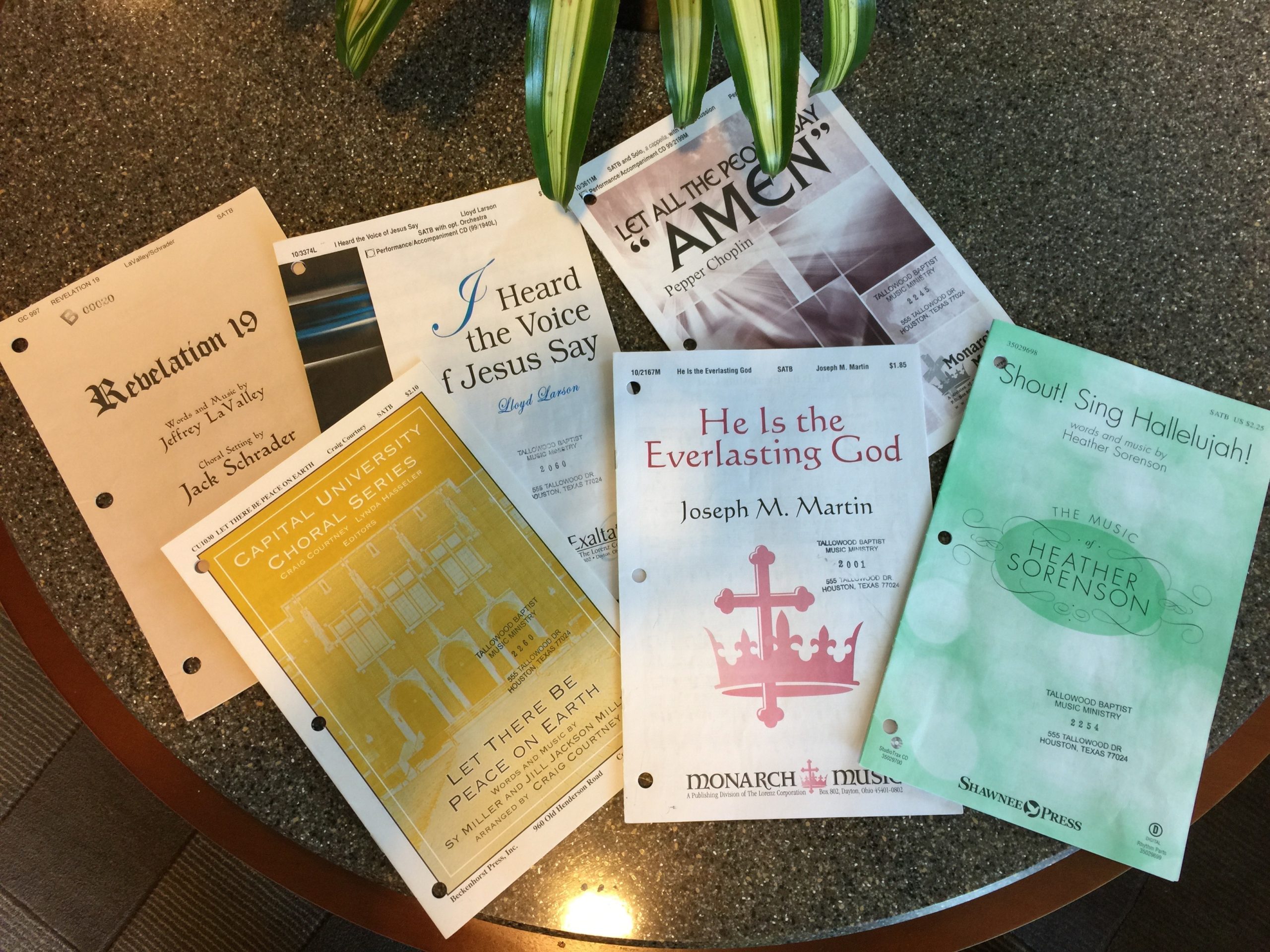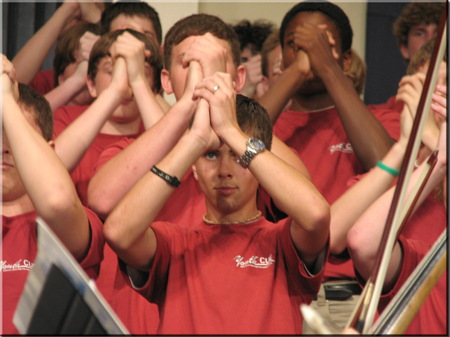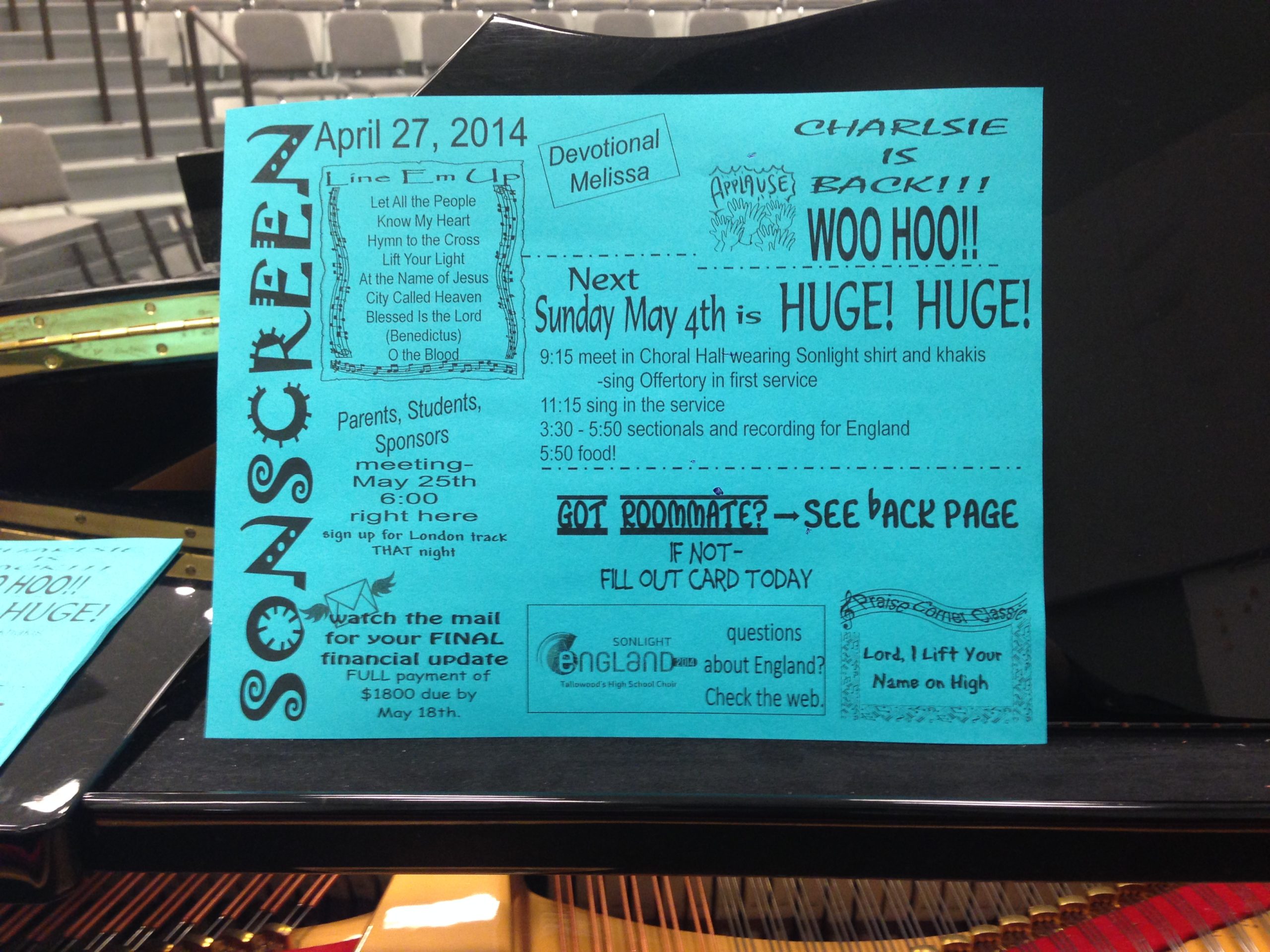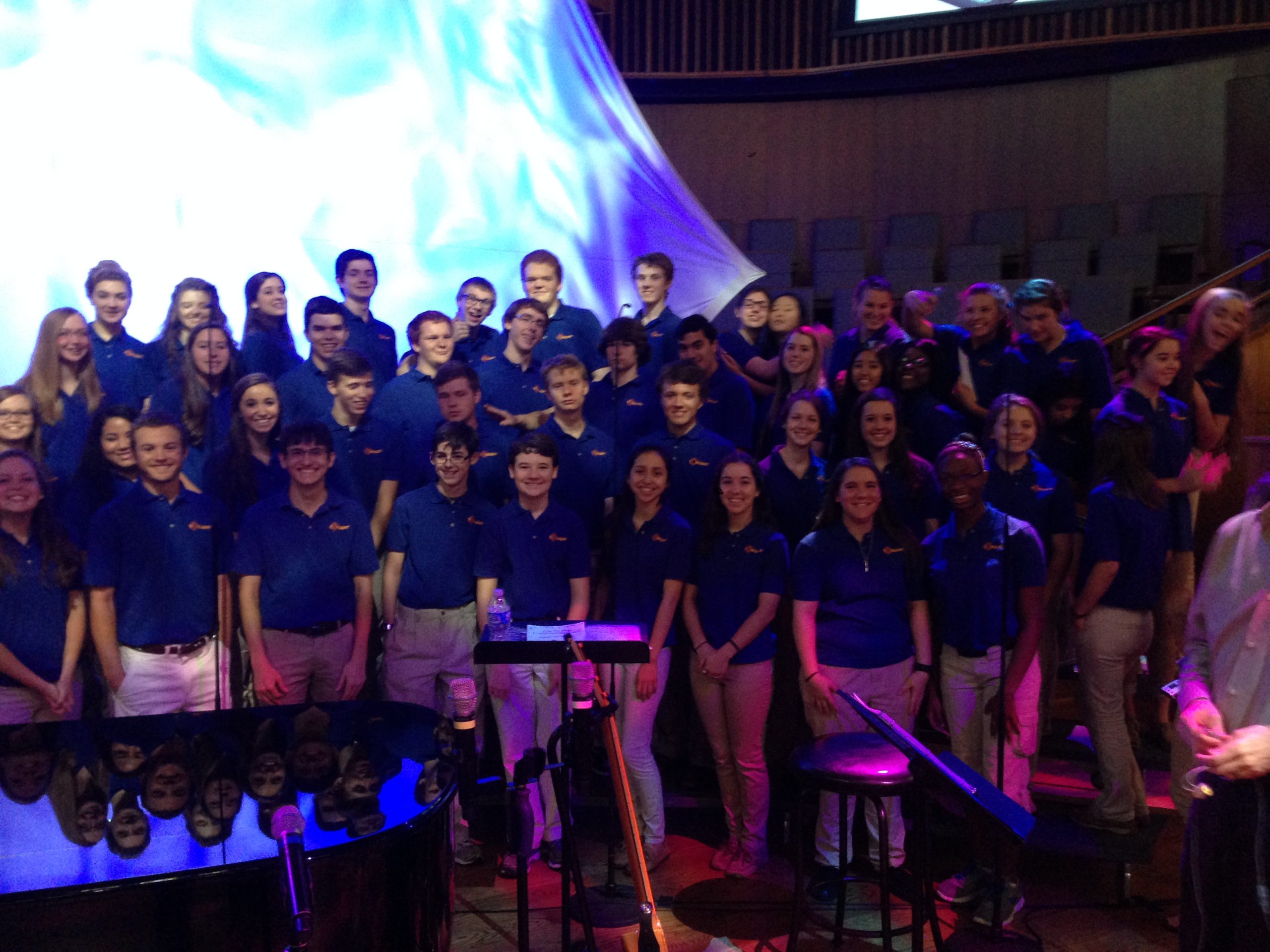I know. . . I know you are thinking. . .”really—everything?” But hear me out.
Over the years I have introduced at least a 1000 new anthems to various groups of all ages. You probably have too. I have introduced music to adult choirs, adult ensembles, junior high choirs, high school choirs, all-state choirs, county-wide youth choirs and on and on.
Here is something that I have discovered. HOW you introduce a new anthem to student choirs is EXTREMELY important.
Their “first impression” can determine if they can hardly wait to sing the song next week, or if they do the big eye roll that we ALL love to see in rehearsal. (NOT!)
Adult groups are much more tolerant of a poor or botched rollout of a new piece, but the younger the choir the more the director has to make certain that the roll out is PERFECT.
Here is the goal.
At the end of the first time the choir has looked at the piece everyone in the room needs to be excited about the next time they get to rehearse that song.
Julie Andrews sang, “Let’s start at the very beginning, a very good place to start” Well, that might be true for Do-Re Mi, but it is NOT the best way to start a new anthem.
I can’t remember the last time I had a new piece for one of the youth choirs at Tallowood, where I started with the accompanist playing the introduction and we all started singing the music from the top.
I suppose that with some anthems that would work, but here are some alternatives that you might find more effective.
Prior to introducing the piece to the students, make sure that you have given the piece to the accompanist with a sticky note on it that tells him or her the anthem’s start date. Make sure that they have at least 2 weeks to get it ready. It is OK for the kids to be sight reading, but NOT the accompanist.
Here are some great things to look for.
Lead with the text!
Three years ago I was introducing Heather Sorenson’s “Raise Your Hands.” I chose this song because it said things like, “Raise your hands when you’re high upon the mountain and you know that you have been blessed. Raise your hands when you start your day with nothing and you end with even less. Raise your hands to the One who gives us everything, yet shines in emptiness.”
And on and on. It is a great text!
The strongest thing about this well crafted piece was what is SAID.
I had two students rehearse the text of the song and read it like reader’s theater, trading off lines. Before the choir even took the piece out of their packet I had the students come up and share the poem.
When the students finished, more than just the director was teary eyed. Then I said, wouldn’t it be great to get to sing a song that SAYS . . . THAT?
There were some nods.
Then I said, everyone take out “Raise Your Hands” let’s put music to those words.”
Lead with the FUN part!
Recently I was reintroducing Mark Hayes piece, “Rejoice and Sing Out His Praises.”
It is one of the high school choir’s favorite pieces of all time, but it is one of the hardest pieces they ever get to sing.
Right in the middle of the piece, there is a section that the basses begin, “I will rejoice and sing praises forever. I will rejoice and sing praises to God.”
We ALL learned the fun bass part. Then we ALL learned the fun tenor part that begins 5 measures later. Then, we all learned the fun alto part that followed the men’s parts.
Finally, we all sang our appropriate parts (we let the sopranos just sight read their part, since their part makes much more sense in the context of the other voice parts.)
In less than 7 minutes the kids LOVED the song and could hardly wait to learn the other parts of it.
It took us MONTHS to learn it, but they didn’t mind, because they LIKED the song from the very first day.
When you have to MAKE them put the song away and go to the next one on the agenda, you know you hit a home run on the rollout.
Lead with the Form and Analysis!
Yeah right, Randy, that is always a winner.
Stay with me on this.
Recently, with the junior high choir we were beginning a new anthem that just happened to be in this form:
A B A C A D (bridge) A
I decided to teach the A section as a song that I taught them by rote.
“Hey everyone, listen to this melody.” The accompanist played it and I sang it. Then, they sang it with me. We all sang it one more time.
I then had the choir take out the new piece from their packet. With their packet pencils we marked the sections in the music with large A, B, A etc. I said that they all knew the A sections—we just sang the melody of it.
I then asked the students to tell me how much of the piece that they already knew. Right on cue, one of the boys said, “we already know half the song!”
Victory! We put it away, but they could hardly wait to get back to the rest of the music.
Lead with the bottom line!
In a previous posting I mentioned that we have adult singers who rehearse with us each week in our sections. (naturally, they don’t perform with us.)
This is a tremendous blessing for all kinds of reasons.
Last year I wanted to introduce “Let There Be Peace On Earth” arranged by Craig Courtney
As I was preparing for the roll out, I thought that it would be really good if the students in the choir could HEAR what the anthem was going to sound like when it was finished.
There are several ways to DO that, especially with You Tube and other on-line sources.
But I decided to have the singing sponsors stay after the rehearsal for a few minutes the two weeks leading up to the introduction of the piece. I asked them to learn the piece first. They did! Many of them had sung that song (but not that arrangement) in high school choir when they were kids.
On the day of the rollout, I had the adults come forward and perform the song for the kids and they followed along in their music.
When the adults returned to the sections (so that we could all sight read it together) the students were eager to get their teeth into the music.
That first time through with the students wasn’t perfect, but it was a winner.
End of Part ONE—more First Impression tricks coming in two weeks!
Randy Kilpatrick
published May 4, 2015










